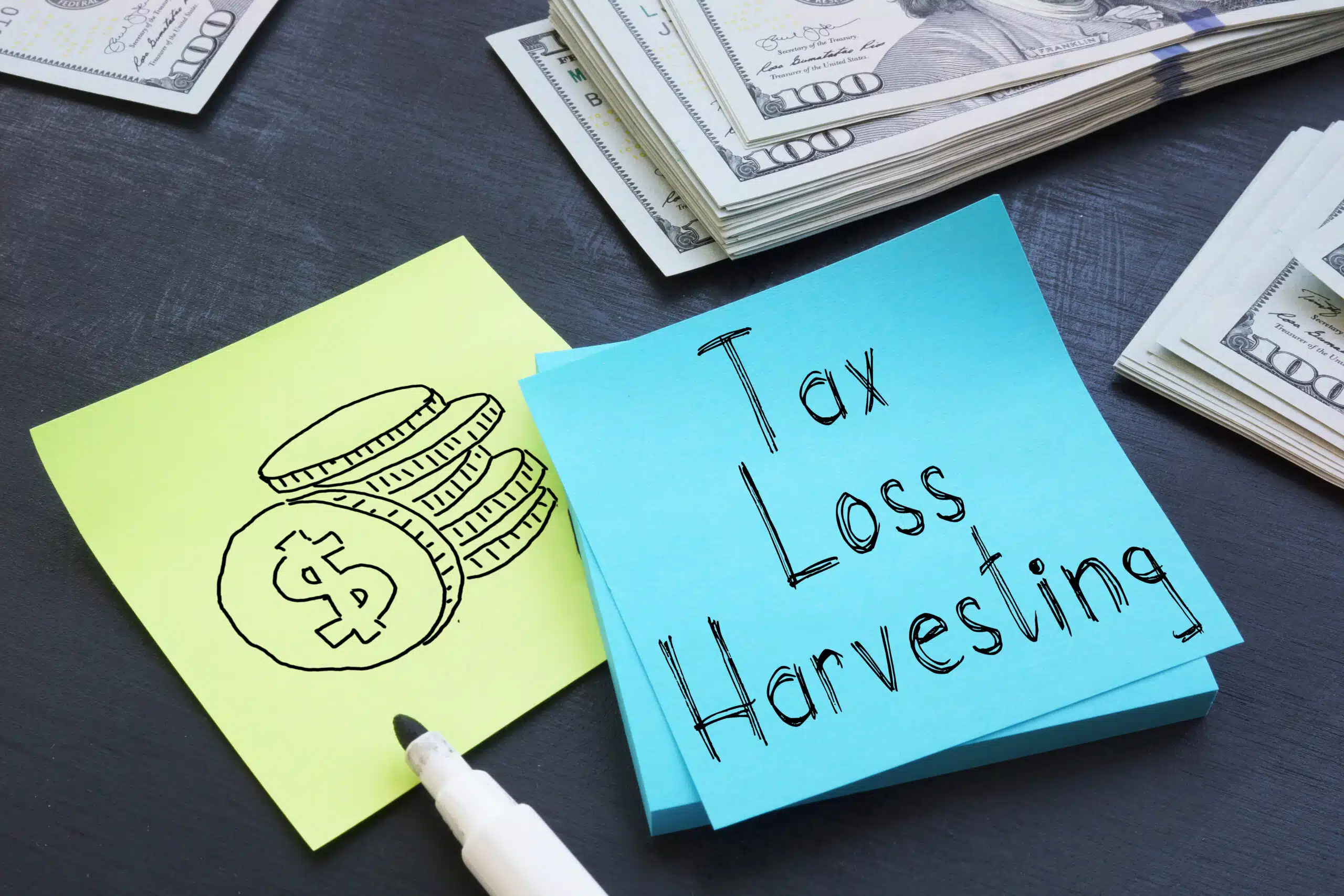
Taxes are an inevitable part of life, and each year when we file, most of us in our working years will be hit with a hefty bill. There are, however, strategies that can reduce and sometimes even eliminate your tax liability.
Reducing taxes takes planning and the foresight to take advantage of all the tax breaks that the tax code allows. Reducing taxes includes strategies such as Roth conversions, using health savings accounts (HSAs), and tax-efficient investments such as municipal bonds, business deductions, charitable giving, and tax credits.
In addition to those strategies and tools, properly managing your taxable investments through tax loss harvesting and properly understanding your tax lots can also drastically reduce your tax liability.
Tax Loss Harvesting and Short and Long-Term Capital Gains
Tax loss harvesting uses market volatility to your advantage by capturing losses that are then deducted from your income on your tax return to reduce your tax liability. Capital gains tax is determined by where you fall based on your taxable income.
A lower taxable income will lower your total tax liability. The taxes you pay on your investment gains are calculated by how long you have owned that investment. Long-term capital gains tax rates are levied on the gains of investment you have owned for over one year.
These rates are:
- 0%
- 15%
- 20%
Short-term capital gains are levied on investments owned for one year or less. In this case, the gains from your investment sales are treated as ordinary income and generally taxed at a higher rate. The government tries to disincentivize activities such as day trading while encouraging longer-term buy-and-hold strategies.
Understanding Tax Loss Harvesting
Tax loss harvesting is a year-round event; not just something you do in December. If you wait until December to try to harvest some losses, the opportunity may have already passed you in the early months.
When it comes to harvesting losses, there is a rule you need to be aware of.
If you sell a security to harvest the tax loss, you cannot purchase the same security within a sixty-day window, from thirty days before the sale to thirty days after the sale. If the security is repurchased during that period, it is said to violate the wash sale rule.
If this rule is violated, then the loss from the sale gets added to the basis of the repurchase, effectively negating the tax loss harvest.
If you’re invested in ETFs or mutual funds that track an underlying benchmark, you can maneuver around this rule by buying a different but similar fund that covers the same asset class.
For example, Vanguard’s S&P 500 ETF (VOO) can be sold, and Schwab US Large Cap ETF (SCHX) can be purchased. This way, you don’t lose time in the market by realizing a loss and can maintain your market exposure.
Getting Taxed at Zero Percent
Some tax filers will be able to reduce their capital gains tax liability for the year to zero by strategically selling some of their appreciated assets. If your taxable income lends yourself to being in the 12% tax bracket (S: $41,775 & MFJ: $83,550) you qualify to realize capital gains at a 0% long-term capital gain rate. This is something that should be taken advantage of annually until this opportunity (due to higher income) is no longer available. As you need income in the future from your brokerage account, having utilized a 0% capital gains tax rate to increase your cost basis will reduce the cost of your realized gain in the future.
Strategic Use of Specific Identification
Tax liability can also be reduced by strategically choosing which tax lots of securities to sell.
Just as it’s helpful to have a mix of taxable, tax-deferred, and tax-free assets so you can increase the flexibility of where you pull money from, the same is true for when you go to sell in the account, you’re looking to realize securities from.
When selling a security, for example, to rebalance a portfolio, choosing which shares to sell can have a huge effect on the overall tax liability.
Most brokerages automatically default to selling according to first in, first out (FIFO). This means that the oldest shares in your portfolio will be liquidated first in the event of a sale.
When you sell your investments, you can override the FIFO default and choose which shares you want to sell. When you sell, you can choose the shares that will result in the lowest tax bill at the end of the year. This may mean selling the shares with the highest cost basis.
To do this properly, you must keep meticulous records of the cost basis and purchase dates. Most brokerages will allow you to access this information in your account easily, but if you had a brokerage account prior to 1/1/2011, then brokerage firms were not required to track cost basis and it’s likely up to you to ensure that your cost basis is up to date.
Knowing both the tax laws and your specific situation is crucial when deciding which shares to liquidate, so speak with a trusted tax professional if you have any questions. The tax code does allow for many tax breaks on your capital gains.
Tools such as IRAs and HSAs can offer tools for you to utilize to reduce your overall liability and defer taxes as late as possible. In addition to those tools, clever investors can further decrease their liability by being aware of the nuances in the tax code.
There is generally no way to always avoid paying taxes, especially when you are making money from your investments. But with proper planning, knowledge of all applicable tax laws, and the help of a trusted professional, taxes can be greatly reduced.



